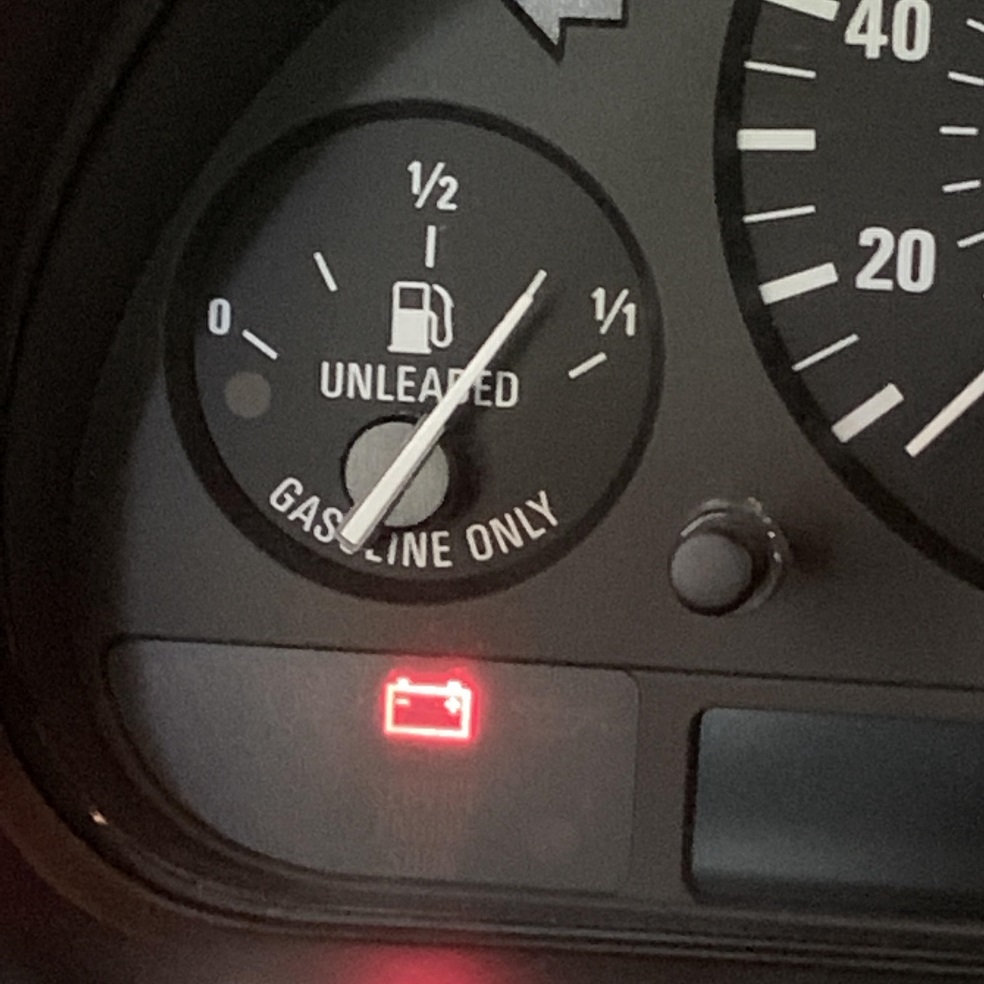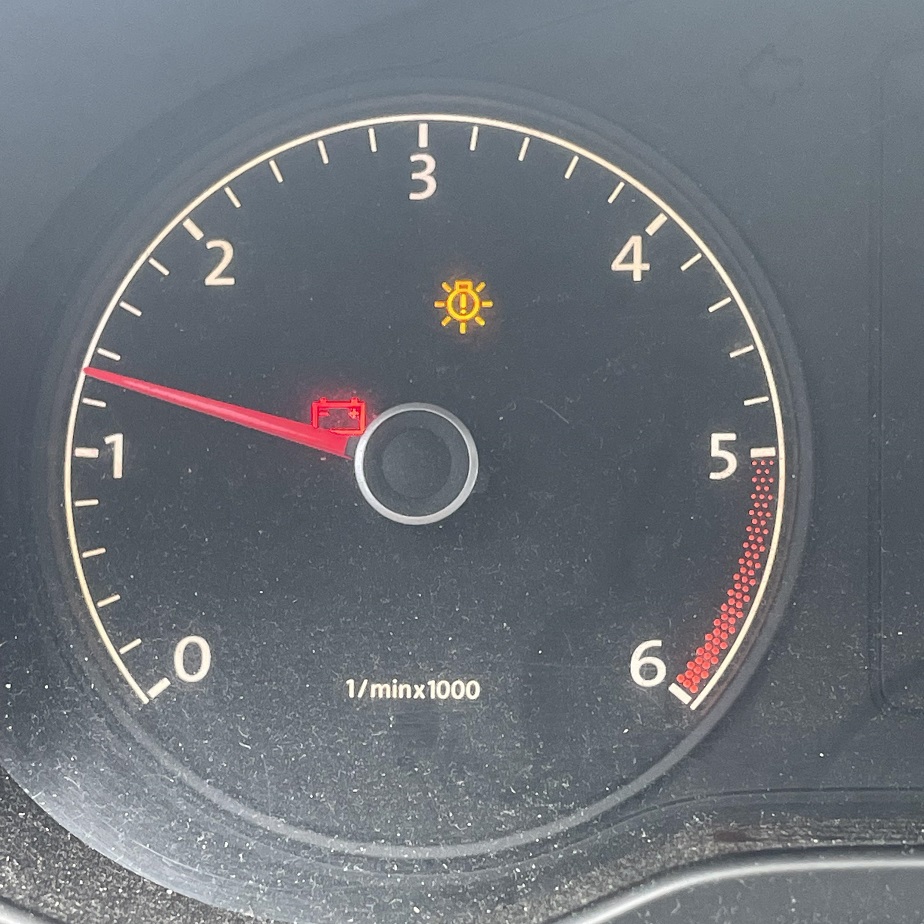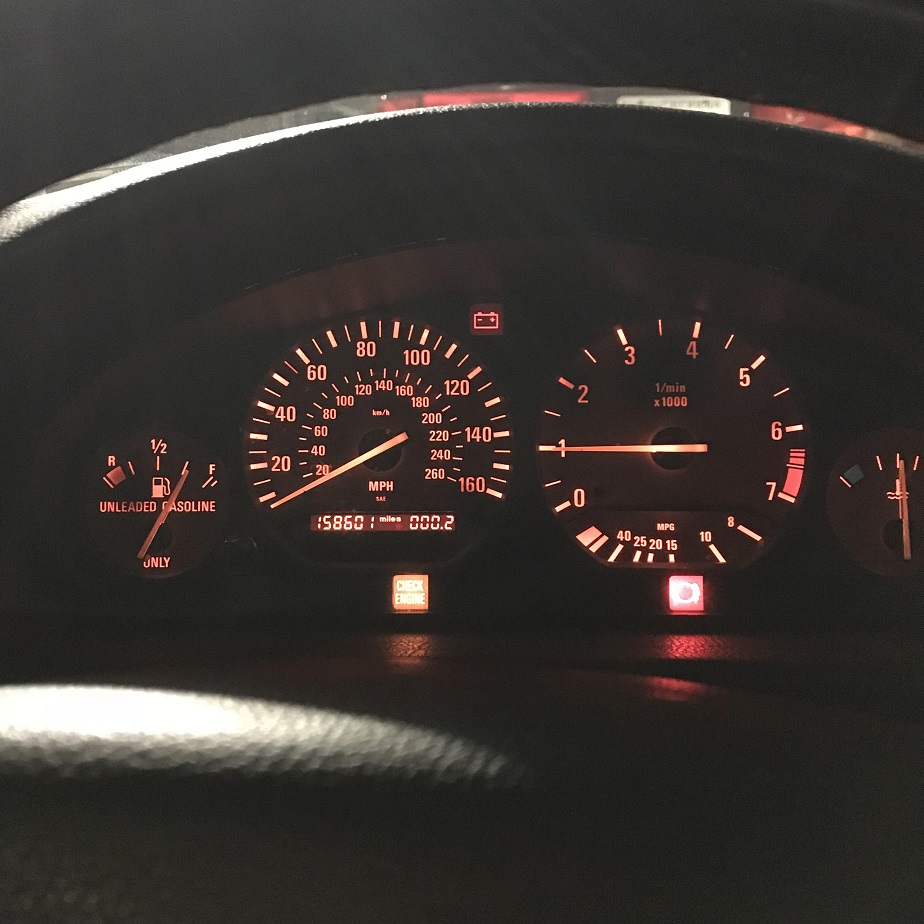Introduction to the Car’s Alternator Light
When the alternator light on your car’s dashboard illuminates, it’s a heads-up. It’s telling you to check the vehicle’s charging system. Specifically, this light signals an issue with not just the alternator, but possibly parts related to it, like belts, wiring or the battery itself. Don’t ignore it; this symbol could save you from being stranded. Here’s a brief rundown on what to be mindful of if that light comes on.
Key Indicators to Watch Out For
The car’s alternator light might flicker or stay on steadily, raising a flag about your electrical system’s health. If you see this light, remember the following points:
- Immediate Attention Needed: The alternator light hints at potential failure of the charging system. Without a fix, your car might stop unexpectedly.
- Battery Dependency: Your car is likely using battery power alone, which won’t last long. The alternator normally charges the battery, but if the light’s on, it’s probably not doing its job.
- Limit Accessory Use: Ease the load on your battery. Turn off non-essential electric accessories like the stereo and air conditioning.
- Check Alternator Belt: A loose or damaged belt can be the culprit. It might not be driving the alternator as it should.
- Inspect Battery Connections: Faulty connections can trick the system into thinking there’s an alternator issue. Ensure battery terminals are clean and secure.
Act promptly upon seeing the alternator light; it gives you a chance to address the issue before it escalates. Ignoring it could lead to bigger problems, such as a dead battery or a stalled engine. Knowledge is power, and understanding this warning light is your first defense.
Common Signs and Symptoms of Alternator Issues
When an alternator begins to fail, it gives off several warning signs.
Dim or Overly Bright Lights
If your headlights or dashboard lights seem to dim or get too bright suddenly, take notice. This can indicate an alternator that’s not regulating power well.
Weak or Dead Battery
A weak battery might not always start the car. If the alternator isn’t charging it, this can happen even with a new battery.
Whining or Grinding Noises
Unusual sounds under the hood may point to an alternator bearing problem. Listen for a whining or grinding noise.
Electrical Issues
Problems with power windows, radio, or lights can signal alternator problems. These electrical functions might work inconsistently.
Warning Light Activates
The alternator light on your car’s dashboard will light up. It’s shaped like a battery or says ‘ALT’ or ‘GEN’.
Engine Stalls
Your car might stall. Alternators charge the battery and power the engine. If it fails, your car may stop running.
Strange Smells
A burnt rubber or hot wire smell often means belt issues or electrical overload. These can result from a failing alternator.
Recognizing these symptoms early can prevent more extensive damage. As soon as you notice them, reduce electrical usage and seek professional help. This proactive approach could save your vehicle from severe electrical system damage.
Step-by-Step Guide to Diagnosing Alternator Problems
When the alternator light on your car comes on, it’s time for action. Here’s a guide to help you find out what might be wrong.
- Check the alternator belt: Look for signs of wear like cracks or looseness. A bad belt can stop your alternator from working.
- Examine the battery connections: Make sure they’re tight and free of corrosion. Dirty or loose connections can cause charging issues.
- Test the battery: If it’s old or weak, it might not hold a charge. Even a new battery can fail if the alternator has problems.
- Listen for strange noises: A failing alternator can make grinding sounds.
- Look at the lights: If your headlights dim and then get bright, your alternator might be failing.
- Smell for burnt rubber: This could be a sign that the belt is slipping or overheating.
- Check electrical system performance: Issues like slow power windows or a non-working radio can point to alternator problems.
If you’re not comfortable checking these things, take the car to a mechanic. Remember, fixing an alternator problem early can stop bigger issues later.
Understanding Alternator Belt Issues and Maintenance
Maintaining your alternator belt is central to keeping your electrical system working. Here’s what to know about potential issues and maintenance.
Signs of Alternator Belt Problems
Look out for these signs that your alternator belt needs attention:
- Fraying or Cracks: A belt with visible damage could snap soon.
- Squealing Noises: This sound can mean your belt is slipping.
- Loose Belt: Your belt shouldn’t give more than an inch when pushed.
- Wear and Tear: If the belt looks worn, it probably is.
- Fluid on the Belt: Oil or coolant on the belt can cause slippage.
Alternator Belt Maintenance Tips
Follow these tips to keep your alternator belt in good shape:
- Regular Inspection: Check your belt often for any signs of wear.
- Proper Tension: Ensure the belt has the correct tension.
- Cleanliness: Keep the belt free from oil and grime.
- Timely Replacement: Replace the belt as per your maintenance schedule.
Always turn off your engine before inspecting the alternator belt. If you’re unsure about the process, consult your vehicle’s manual or seek professional help. Regular belt checks and maintenance can prevent alternator light issues and keep your car running smoothly.
The Role of the Battery in Your Vehicle’s Electrical System
Your car battery is vital. It powers the engine’s start and all electronic accessories. Without a working battery, your car won’t move. Here’s what to know about your battery’s role.
- Power Source for Engine Start: The battery gives that initial jolt to start the engine.
- Supply for Electronic Accessories: Once running, the battery supports accessories like lights and the radio.
- Reserve Energy: If the alternator fails, the battery provides backup power temporarily.
Keep your battery connections clean. Look for corrosion and make sure they are tight. A healthy battery means a smoothly running car. Regularly check your battery’s health and replace it when needed.
Remember, the alternator charges the battery while you drive. If the battery light shows up, it might mean the alternator or battery has issues. Take action quickly to avoid breakdowns.
Troubleshooting Electrical Connections and Wiring
Electrical issues in your car can be daunting. However, proper troubleshooting can save you time and money. Here are steps to ensure your electrical connections and wiring are in good order.
Check for Corrosion on Battery Terminals
Start with the battery terminals. Look for white or bluish powder that indicates corrosion. Corroded terminals disrupt electricity flow and can illuminate the alternator light. If you spot corrosion, clean the terminals carefully.
Inspect Wiring for Damage
Examine wires leading to and from the battery and alternator. Look for fraying, cracking, or loose connections. Damaged wires can prevent proper charging and need immediate attention. Replace any damaged wiring you find.
Ensure Tight Connections
Loose connections can lead to a drop in power. Check all clamps and cables to make sure they’re secure. Tighten any that are loose. A good connection allows for proper charging and operation of your vehicle’s electrical system.
Test the Alternator Output
Use a multimeter to measure the output from the alternator. It should produce a consistent voltage that matches your car’s specifications. An inconsistent or low output can signal an alternator issue.
Seek Professional Help If Needed
If after these checks the problem persists, consult with a professional. They can perform a more thorough inspection and diagnose issues beyond basic troubleshooting.
Addressing electrical issues promptly can prevent more severe problems down the road. Regular checks and maintenance ensure your car remains reliable and safe to drive.
Professional Alternator and Battery Testing Services
When the alternator light on your car shines, it’s crucial to act fast. Expert testing services can pinpoint the exact problem. It’s best to visit a professional auto service shop for a thorough check-up. Here’s why professional testing matters and what it involves:
- Accurate Diagnosis: Professionals use specialized tools to test the alternator’s output and battery health. This ensures an accurate diagnosis of the issue.
- Comprehensive Inspection: They’ll check not just the alternator and battery, but also belts, connections, and wiring. This comprehensive approach spots any related problems.
- Safety: Handling the car’s electrical system can be dangerous. Trained mechanics know how to do the job safely without risk of injury or further damage to the car.
- Time-Saving: Trying to diagnose the problem yourself can take time. Auto experts can find and fix the issue quickly, getting you back on the road sooner.
- Warranty and Guarantees: Many service centers offer warranties on parts and services. This gives you peace of mind that the repair is solid.
Remember, driving with the alternator light on can lead to a breakdown. Get your car to a trusted service center as soon as you see the light. They will determine if it’s a simple fix like tightening a loose cable, cleaning corrosion, or if more extensive repairs are needed. Acting promptly might save you from the inconvenience and danger of getting stranded.
Preventative Measures and Maintenance Tips for Alternator Health
Keeping your alternator in top shape is crucial. Good maintenance prevents breakdowns and saves money. Here are simple tips to help you maintain a healthy alternator and electrical system.
- Regular Inspections: Check your alternator and belts often. Look for wear or damage. Regular checks can catch issues early.
- Keep It Clean: Dust and grime can affect your alternator’s performance. Clean the engine bay to avoid buildup.
- Monitor Battery Health: A healthy battery reduces strain on the alternator. Get your battery tested every year.
- Tighten Connections: Ensure all electrical connections are secure. Loose cables can lead to power loss.
- Listen for Noises: Pay attention to unusual sounds from the alternator area. Noises may indicate a problem.
- Address Issues Quickly: Don’t wait to fix alternator problems. Delaying can cause more damage.
- Professional Checks: Have a mechanic test your alternator regularly. They can spot problems you might miss.
By following these maintenance tips, you can avoid the stress of a failing alternator. Not only do these actions help keep your car dependable, but they also contribute to safer driving conditions.



